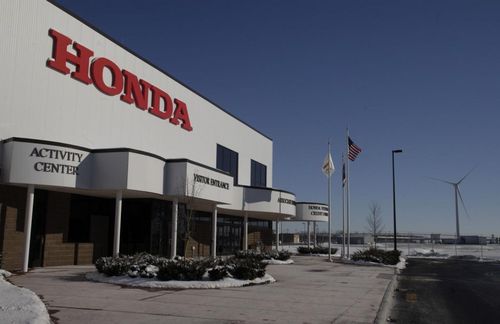Honda Continues To Deliver On Global Commitment To Renewable Energy
SLOUGH , UNITED KINGDOM – Jan 22, 2014: Honda has completed another important phase in its programme to reduce the environmental impact of its products and manufacturing operations around the world. The company this week activated two newly installed wind turbines at its plant in Russell’s Point, Ohio, USA. This will make the plant the first major automotive manufacturing facility in the United States to obtain a substantial volume of electricity directly from on-site wind turbines.
The turbines will produce 10,000 megawatt hours (MWh) per year, which equates to approximately 10 per cent of the plant’s overall electricity consumption.
The move is another step toward meeting Honda’s voluntary environmental commitments. These include making a 30 per cent reduction in CO2 emissions from Honda products and significant CO2 reductions from the company’s plants and other operations by 2020, compared with 2000 levels.
Further investment in wind power will come later in 2014, with the construction of a wind farm alongside its new automobile production plant in Brazil. The wind farm is expected to generate electricity equivalent to Honda’s current annual electricity consumption for automobile production in Brazil (approximately 95,000 MWh).
Low-carbon manufacturing around the world
Honda strives to
introduce low carbon manufacturing solutions across all of its plants, the
best example being the sophisticated new automobile production plant in
Yorii, Japan, which opened in July 2013.
On the roof of Yorii’s final assembly and inspection building Honda has installed thin-film solar cells capable of generating 2.6MWh of electricity – the largest solar power generation system at any car factory in Japan. This is sufficient to supply more than 450 households with electricity and eliminate 1,200 tonnes of CO2 that would otherwise enter the atmosphere. Yorii also has an 8,730kW gas turbine generator running on city gas to help lower emissions.
The plant is surrounded by a 16,000m2 area into which Honda has introduced rare animals and plants. The area includes thickets, waterways, rice paddies and wetlands. There is also a two-kilometre green bio-corridor to the nearby Ogawa engine factory.
Honda’s European manufacturing plants are also working towards reducing CO2 emissions. Both Honda of the U.K. Manufacturing (HUM) and Honda Turkiye (HTR) automobile production plants utilise solar power to this end.
In October 2011, HUM introduced renewable energy from a 5 megawatt peak (MWp) solar-array consisting of more than 21,000 ground mounted panels covering an area of 32 acres. The installation generates 4.5 gigawatt hours (GWh) of renewable energy, equating to 4.4 per cent of the sites total electricity requirement for the year. In the first year of operation it delivered considerable cost savings compared to buying grid supplied energy and reduced CO2 emissions by almost 2,000 tonnes.
Similarly, HTR has been successfully using solar power in its operations, recently installing solar panels and invertors on site. To date the site has generated 124,000 kilowatt hours (KWh) per year of renewable energy, resulting in a CO2reduction of 54 tonnes.



